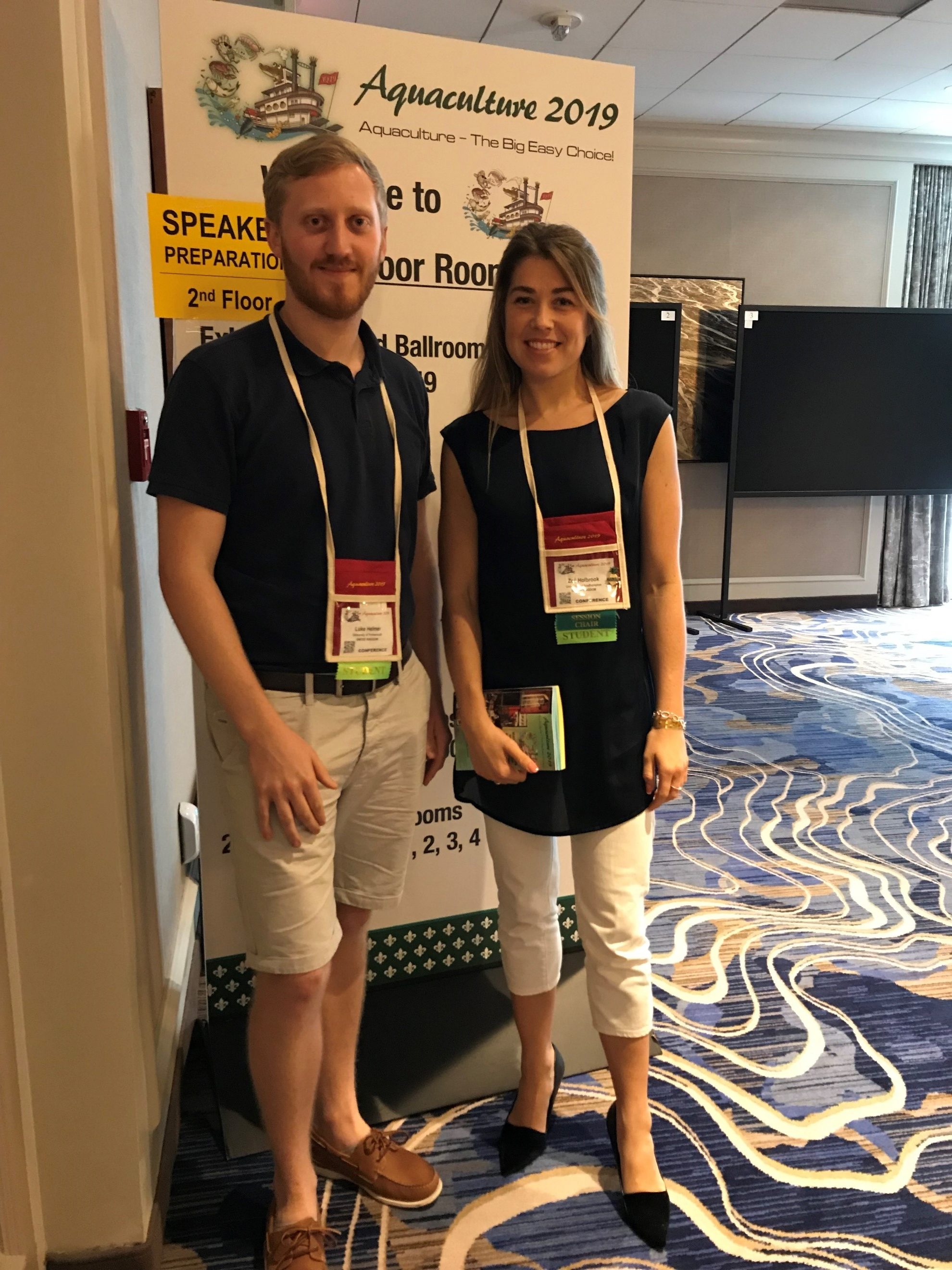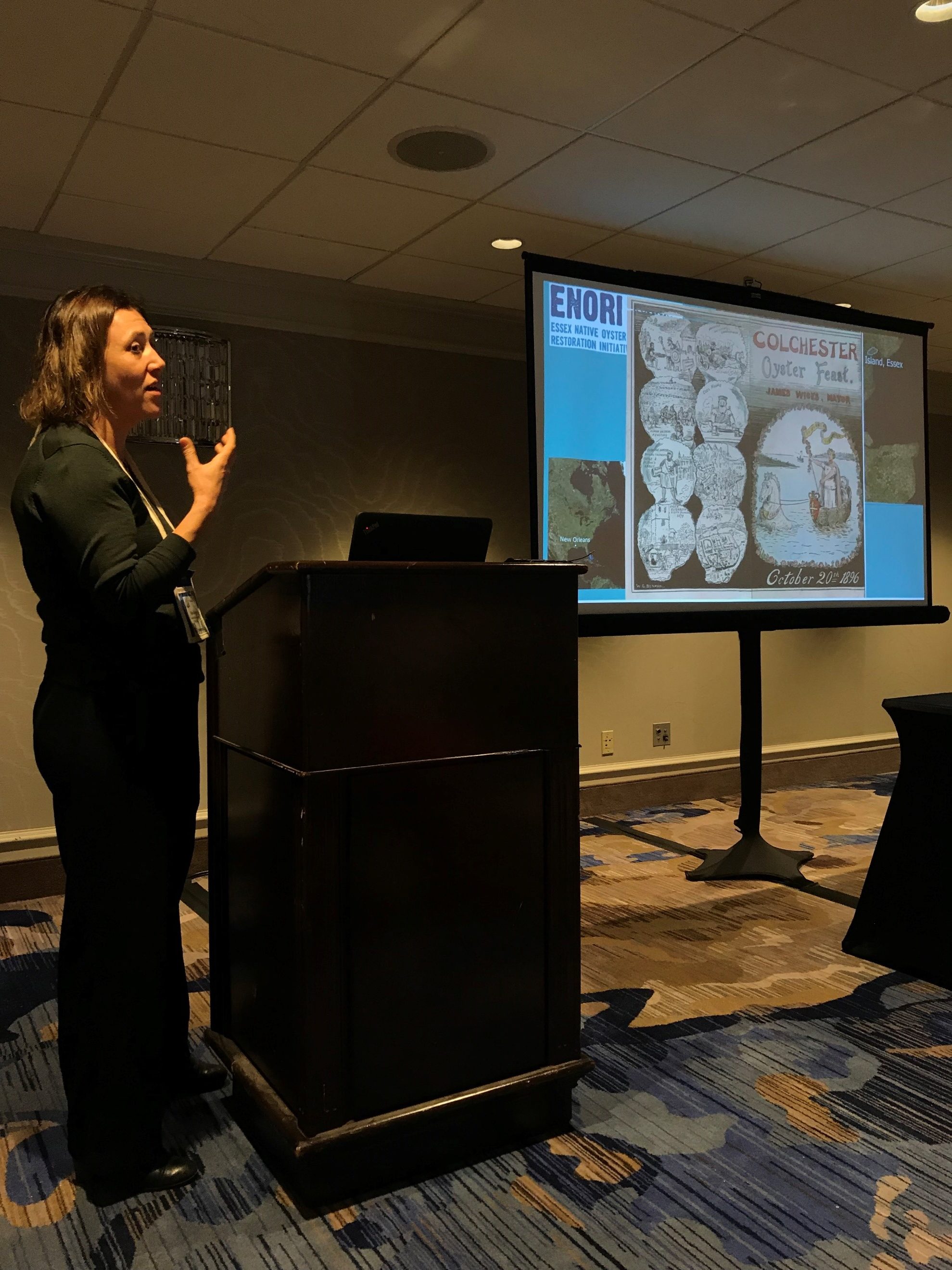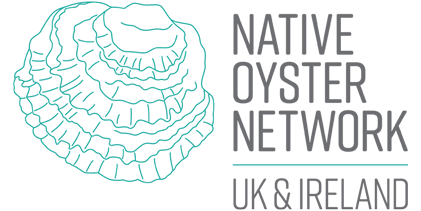Should we take our oyster aquaculture offshore and into wind farms?
Is the deficit of cultch a limitation or an opportunity for restoration?
Can we learn from historical data on the booms and busts of oyster fisheries over the last 100 years?
Is the Ostrea genus a tractable prospect for restoration?
This last question was posed to 10 Ostrea spp. experts and Alison Debney (of London Zoo, ZSL UK) responded with a giant YES!
On the last day of Aquaculture 2019 in New Orleans, after 20 jazz bars, 50 charbroiled garlic & parmesan coated oysters, and 4 days of innovative discussions on aquaculture, Janet Brown (UK), Joanne Preston (UK), Aad Smaal (The Netherlands), Åsa Strand (Sweden), Zoë Hilton (New Zealand), Sarah Culloty (Ireland), Zoë Holbrook (UK), Luke Helmer (UK), Luca Van Duren (The Netherlands), Alison Debney (UK) shared their experiences and research on Ostrea spp. restoration.
Janet Brown kick started the session from an historical perspective allowing us to connect with the history of Ostrea fisheries around the world. Photos (Figure 2, curtesy of David Smyth) showing 18+ oysters naturally attached to one another in a single cluster, quickly dispelled the argument whether (or not) oysters can form reefs. This interestingly became a common theme throughout the session with many speakers displaying images of reef-like structures with 2 or more oysters.
Having laid the foundations with Ostrea spp. fisheries background knowledge, we moved the session forward with an update on the new oyster restoration networks recently set up in Europe and the UK. Joanne Preston from the University of Portsmouth highlighted the plans to develop a European standard practice for restoration, following in the footsteps of The Nature Conservancy’s official guidelines (Brumbaugh et al, 2005). It is hoped that the Native Oyster Restoration Alliance (NORA) and Native Oyster Network UK & Ireland (NON) will be efficient in sharing research and best practice for oyster restoration. Networks such as these are contributing to what needs to be a global platform for Ostrea spp. restoration stakeholders.




We were then guided across Europe, through the various methods & techniques being applied in contemporary restoration projects. Aad Smaal gave a perspective on the success of Ostrea restoration in Holland, where they have been using elevated cages to test relaying densities. Microreef structures that are used successfully by UK commercial Ostrea edulis farmers do not appear as favourable to the Dutch Ostrea edulis population. Åsa Strand gave a broad overview of Swedish wild native oysters that are currently sharing ground with blue mussels, Mytilus edulis, and the foreign Pacific oyster, Crassostrea gigas. It turns out that Swedish natural O. edulis beds are doing relatively well considering the state of most European oyster grounds – likely helped by the fact that dredging for oysters is illegal, and all stocks are handpicked by divers. Take note Europe!
Zoë Holbrook and Luca van Duren shared an interest in the effect of hydrodynamics on site selection for restoration. Using laboratory flumes to demonstrate their work, both Zoë and Luca offered important considerations for oyster relaying in areas with strong tidal currents or oscillations. Zoë demonstrated how easily juvenile oysters (for restoration purposes, average shell length of 36 mm) were physical displaced with water flow, implicating the importance of restoration site location and size/weight of oysters for relaying. Luca continued with this theme, describing the disruptive effect of storm surges and wave impact on oyster beds. She went on to discuss the advantages and limitations of the new(ish) concept of offshore wind farms as an alternative option to coastal restoration.
Any contemporary Ostrea spp. discussion would not be complete without a mention of the parasite, Bonamia ostreae, famous for the detrimental depletion of oyster stocks around Europe when it was accidentally introduced in the late 1970s. Cork, Ireland, is one the first locations in Europe to have developed what they consider a disease (Bonamia)-tolerant strain/family. Sarah Culloty told us how Cork is managing this family of oysters by dividing them into size-dependent ponds. However, just as we were getting comfortable with this positive outlook for Ostrea health, Zoë Hilton brought us a devastating story of New Zealand’s native, Ostrea chilensis. In 2015, with their first report of foreign parasite B. ostreae in their waters (Lane et al 2016), the New Zealand government took drastic action and ordered the removal of all Ostrea populations from local waters. The New Zealand O. chilensis population have developed what appears to be a natural tolerance to the endemic ‘sister’ parasite, B. exitiosa, yet the Government did not want to risk the health of the ecosystem by allowing foreign B. ostreae to spread. Conversation quickly turned to discuss the possibility of natural tolerance or resistance to such parasites, something that could dramatically improve the chances of survival for Ostrea spp. restored in a disease-exposed area.
Luke Helmer and Alison Debney finished the session by sharing the work that is currently underway in the south of England. Luke has helped charity Blue Marine Foundation to deploy 20 000 oysters into cages hanging from marinas in the Solent, which have developed into healthy mini-ecosystems attracting endangered eels and other commercially and environmentally valuable species. This work has raised much media attention and is (so far) a positive story for the local oyster population. Alison Debney shared similar restoration success in Essex but highlighted the need to share knowledge on a global scale to ensure best practice is implemented to help restore this genus.
This session made clear the passion and drive to restore Ostrea spp. across the world. It was comforting to know that regardless of the difficulties and challenges faced, there remains a positive outlook for the Ostrea genus with appropriate restoration practice and population management.
A big thank you goes to conference co-organisers, Sandra Shumway and Jay Parsons for giving Zoë Holbrook the opportunity to put together and chair this session. Post session conversations have raised interesting questions that we will be addressing in future meetings and workshops. We hope to elevate the discussion of Ostrea spp. restoration to an international level and learn from experts working with native Ostreid species across the world.
References
- Brumbaugh R. Beck M. Coen L. Craig L. Hicks P. 2005. A Practitioners’ Guide to the Design and Monitoring of Shellfish Restoration Projects: An Ecosystem Services Approach. The Nature Conservancy, Arlington, VA.
- Lane HS. Webb SC. Duncan J. 2016. Bonamia ostreae in the New Zealand oyster Ostrea chilensis: a new host and geographic record for this haplosporidian parasite. Diseases of Aquatic Organisms. 118. 55-63.


